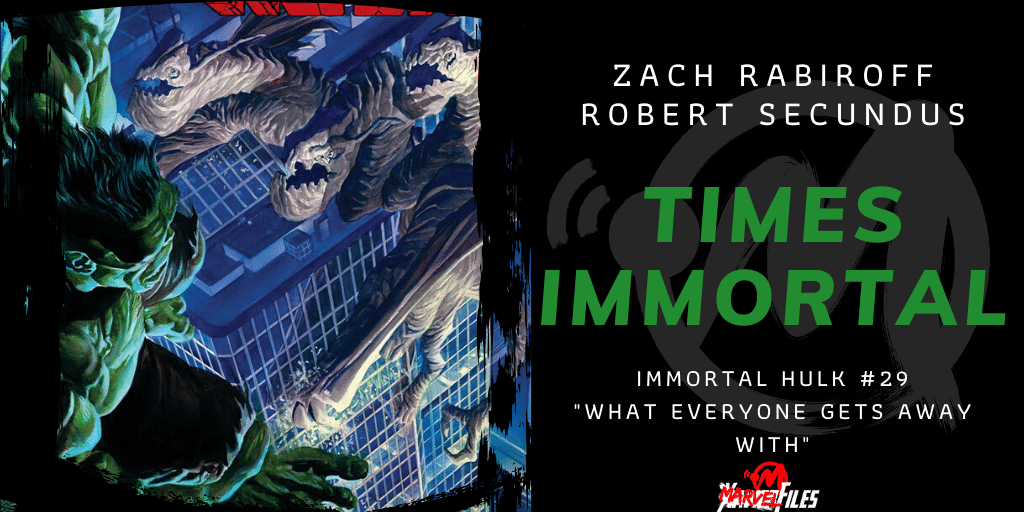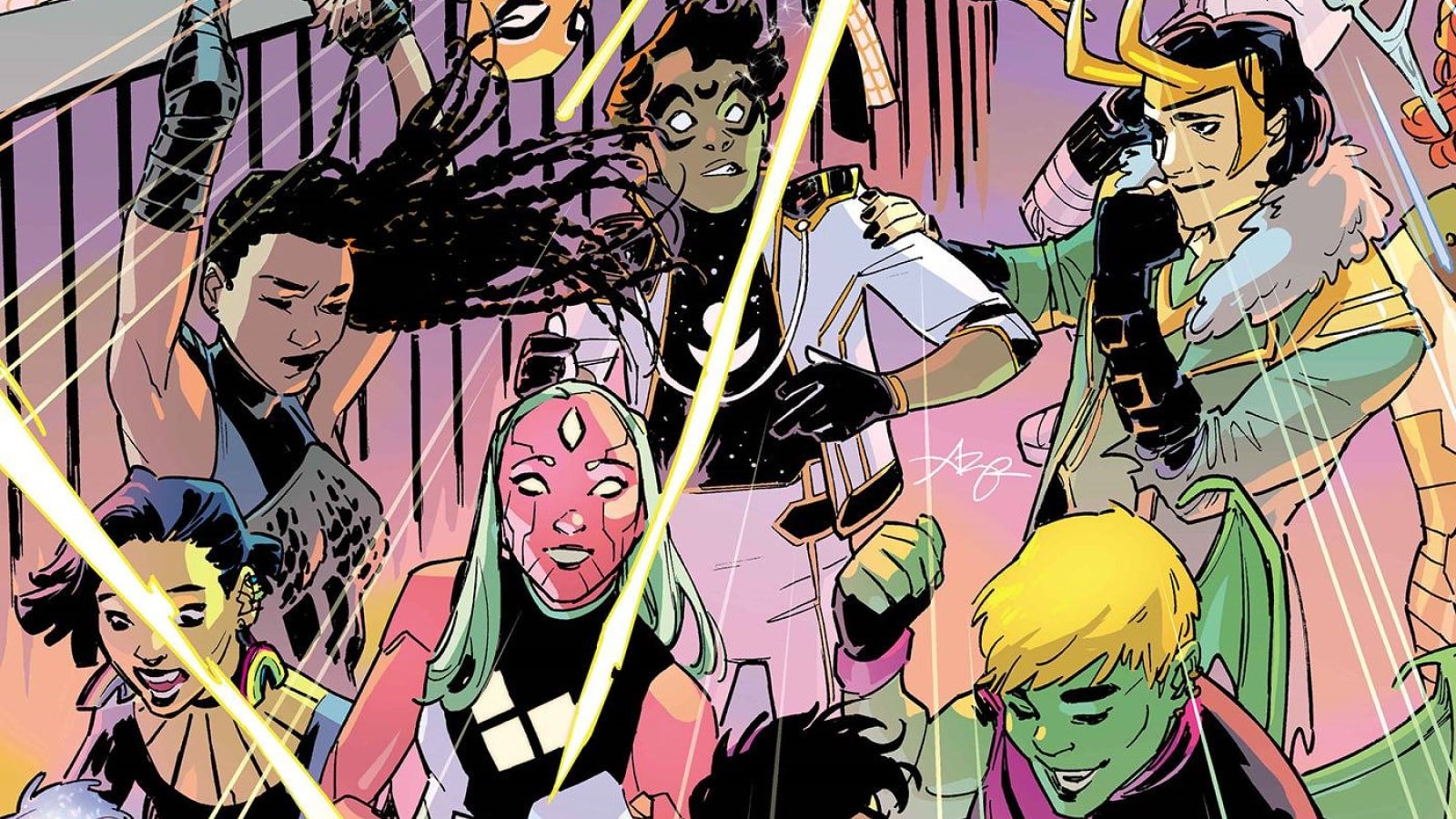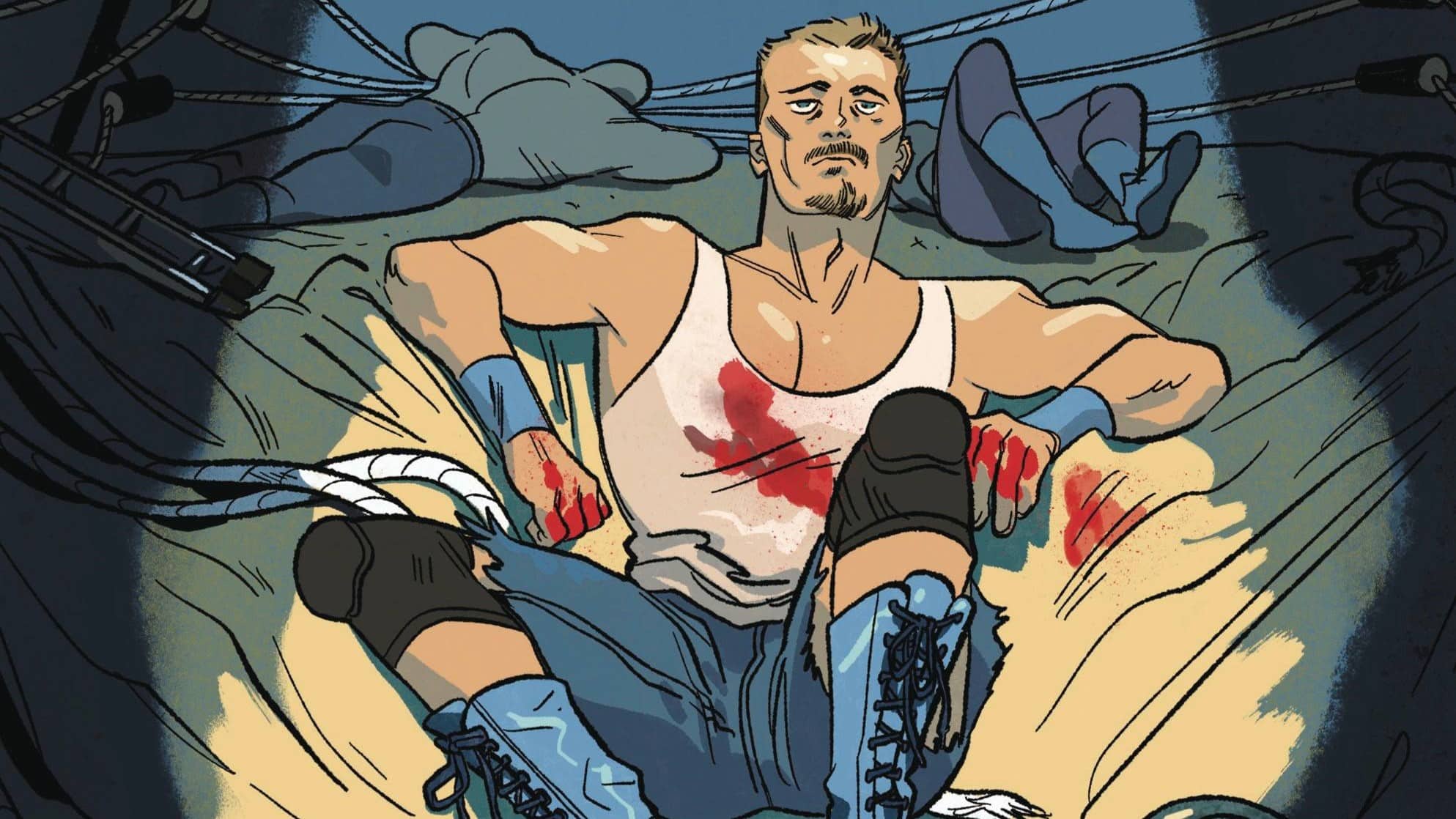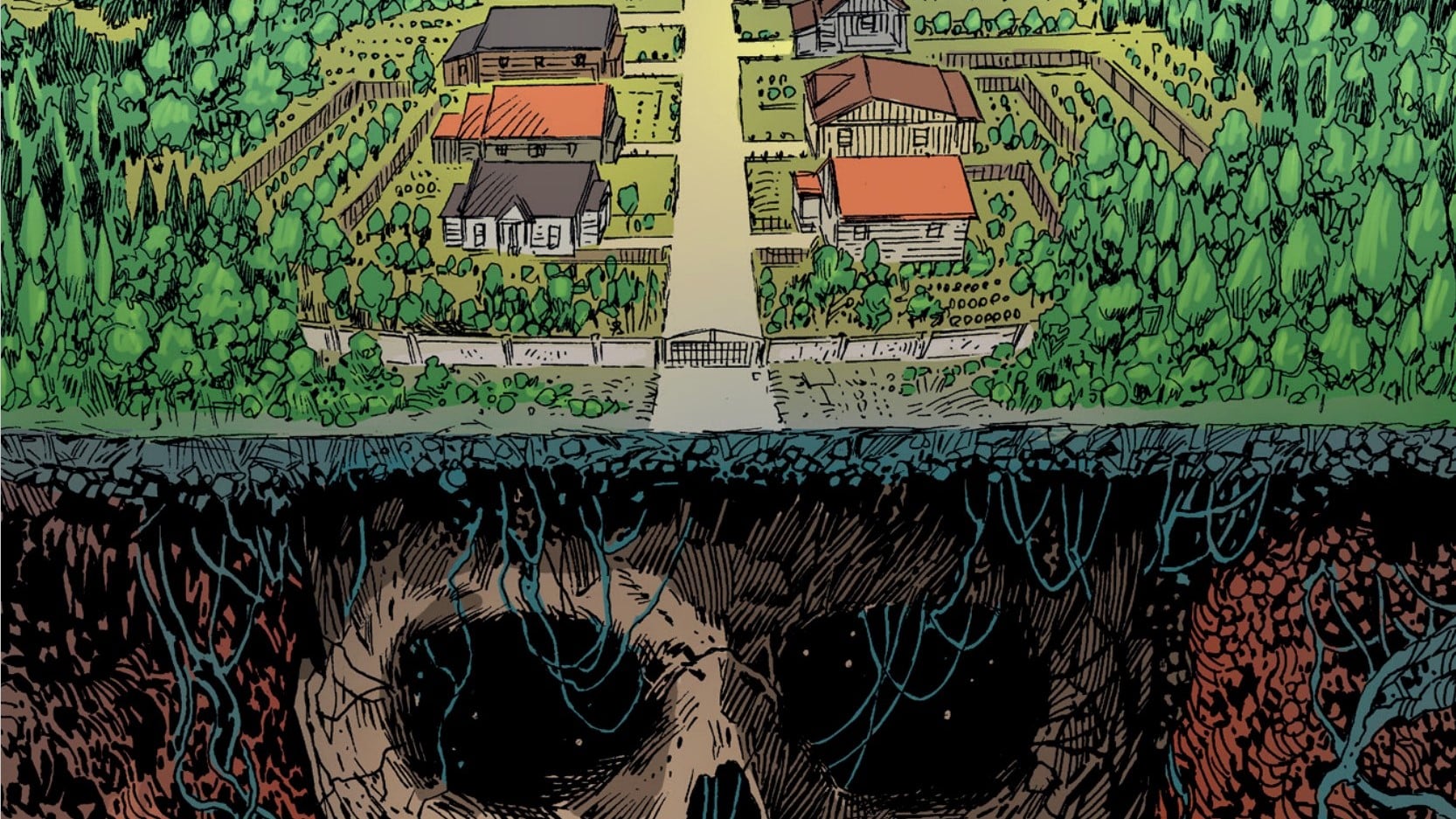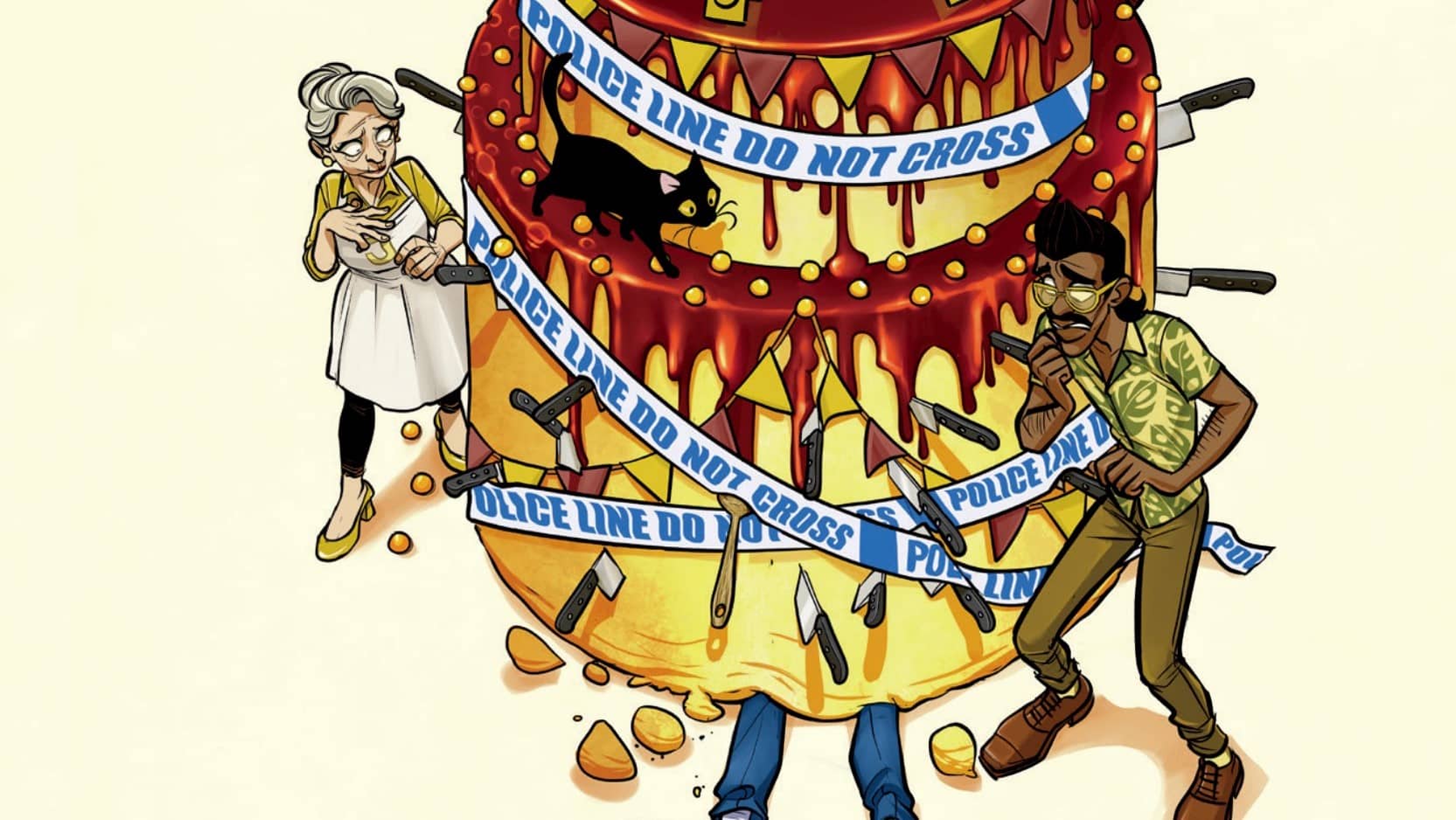Friends, welcome to the first installment of Times Immortal! Robert Secundus and Zach Rabiroff are bringing you the finest and most in-depth coverage of Ewing and Bennett’s Immortal Hulk, and we start off with a doozy as Dario Agger tries to draw out the Hulk for a stupendous Kaiju Battle as Jackie McGee gets chewed out by her boss.
Robert Secundus: Welcome to Times Immortal! Immortal Hulk has been one of my favorite comics in some time, and I was desperately excited to talk about it. It’s a superhero horror comic that ranges in subject matter from the societal effects of social media to Talmudic ideas of the nature of God and Hell. And I’m extremely happy that I don’t just get to talk about it, but that I get to talk about it with Zach Rabiroff; Zach, we’ve never worked together directly before, but your contributions to the HiX-Men Report were immensely influential on HoXPoXToX. And for anyone that enjoyed either of those series, I think Zach and I are going to be talking about a lot of the same sorts of things here: the end of the world, Big Idea SF, and Bible S-word [Ed. Note: We are of course, at Marvel Files, very stoked for these things].
Zach Rabiroff: Robert, believe me when I say that the pleasure of this team-up is all mine. I’ve been champing at the bit to work with you ever since I first read your angelological musings on HoX PoX, and I’m similarly delighted that this is the book that’s bringing us together. From the moment Bruce Banner first confronted Metatron, The Voice of God, I knew that this was a comic that spoke to my peculiar, and probably unhealthy, constellation of interests: ancient, esoteric religious texts, and ridiculously nerdy Marvel Comics continuity. So with all of that mutual back-patting out of the way, let’s get this body-horror show on the road, shall we [Ed. Note: Let’s get even grosser]?
Concerning The Lesser Known Darwin
RS: Immortal Hulk always begins with an epigraph. Here:
“Such is the condition of organic nature! Whose first law might be expressed in the words ‘Eat or be Eaten!’ and Which would seem to be One great slaughter-house, one universal scene of rapacity and injustice!” – Erasmus Darwin Phytologia
RS: Zach, do you have much experience with the lesser known of the Darwins? I’m mostly a Rome-1517 and 1900-Present type of guy, alas, so I’m not very familiar with these Enlightenment folks [Ed Note: Rob is a fan of Dark Times].
ZR: I’m in the tank for ancient Athens myself, but I can talk a good Enlightenment game when I need to. Darwin the Elder, as it happens, was not only the grandfather of the more famous Charles Darwin, but also something of his scientific forebear. Erasmus put forward (in the form of a poem, no less!) a theory theory of evolution based on a rough-and-tumble model of existence, in which all life forms great and small competed against each other in a merciless battle for survival [Ed. Note: The truth is far more boring]. As you might imagine, it caused quite a stir among the intellectual elites of European society, and made Darwin something of a celebrity and a black sheep all at once. Darwin’s theories seemed to imply that there was no divine, moral logic to the universe, but only violence and greed — a bleak view of the universe that obviously has some bearing on the Hulk’s current state.
RS: Actually, when poking around today, trying to fill in the gaps, I stumbled across a passage from that poem (a poem which is TENS OF THOUSANDS OF HEROIC COUPLETS, EXEMPLIFYING WHY I DON’T READ ENLIGHTENMENT THINKERS) that is pretty pertinent to this series. (Sorry folks for two block quotes already in the article, but, uh, I think this is going to be a block-quote heavy kind of column). It uses that phrase again, the great slaughterhouse to describe the world, but turns by the end to consider the role of Mankind:
In ocean’s pearly haunts, the waves beneath
Sits the grim monarch of insatiate Death;
The shark rapacious with descending blow
Darts on the scaly brood, that swims below;
The crawling crocodiles, beneath that move,
Arrest with rising jaw the tribes above;
With monstrous gape sepulchral whales devour
Shoals at a gulp, a million in an hour.
— Air, earth, and ocean, to astonish’d day
One scene of blood, one mighty tomb display!
From Hunger’s arm the shafts of Death are hurl’d,
And one great Slaughter-house the warring world!
The brow of Man erect, with thought elate,
Ducks to the mandate of resistless fate;
Nor Love retains him, nor can Virtue save
Her sages, saints, or heroes from the grave.
While cold and hunger by defect oppress,
Repletion, heat, and labour by excess,
The whip, the sting, the spur, the fiery brand,
And, cursed Slavery! thy iron hand;
And led by Luxury Disease’s trains,
Load human life with unextinguish’d pains.
The Temple of Nature IV. 55-76
RS: “From Hunger’s arm the shafts of death are hurl’d,/ And one great Slaughter-house the warring world!” and “led by Luxury Disease’s trains/ Load human life with unextinguish’d pains” I think about sums up why the Devil Hulk is here to break the human world.
ZR: Indeed it does. But I’m equally struck by another passage from the same essay from which Ewing drew this opening quote, the Phytelogia. Even though Darwin starts off in that treatise by arguing that life is pain and slaughter, he goes on to conclude that even this suffering isn’t eternal: it will eventually end in the relief of death, and death will lead to the conversion of matter into new and different life. So, in Darwin’s words, “Hence it becomes a consoling circumstance, that misery is not immortal.” I’m thinking that final word isn’t a coincidence in this particular book, and that Darwin’s view of the universe is something like Al Ewing’s view of the Hulk: pain transformed through destruction into something rich and strange.
But we’ve probably nattered on enough about Enlightenment philosophy by now, so for the sake of our remaining reader, let’s get to some Hulk talk [Ed Note: Look, the people demanded erudite crap so we’re here to deliver].
Grey Matter
RS: Like much of the series so far, a good chunk of the issue is concerned with Bruce Banner’s psyche. A Theory of The Hulk has begun to develop across the series, as Ewing has attempted to balance a portrayal of the very real Dissociative Identity Disorder and the very fictional Hulk Syndrome, while also attempting to ensure that the portrayal of the latter does not result in disrespect to the former. Zach, what did you make of Doc Samson’s theory?
ZR: It’s certainly a delicate line to walk, and it gets even more complicated when you can consider that no two writers have ever had quite the same definition of what the source of Bruce Banner’s Hulk psychology actually is. What Doc Samson seems to be driving toward here is the idea that Banner — possibly under the influence of the aforementioned Hulk Syndrome — is starting to act as a unifying force for his formerly antagonistic personalities. He’s acting as a peacemaker between otherwise warring factions, which would certainly seem to be a net positive. The trouble is, it raises the question of whether Banner himself is a force for good or evil. In other words: is Hulk the devil on Bruce’s shoulder, or is it the other way around? Is that your reading of this situation, Robert?
RS: I think so, but with the added caveat that these questions may be irrelevant soon. The Night is no longer the Hulk’s only time; nor is the Day Banner’s. As Banner makes peace between personalities, each becomes more like the other, the devil more like the man, the man, more like the devil. The Hulk System begins to unify, and soon, Samson seems to suggest, it will be an in-between thing of twilight. For now, though, the Devil Hulk remains a creature of Night that can, briefly, and not under his full power, walk under the Sun. What do you make of the focus on the Sun this issue? It seems like we’re reading into some real Archetypal sort of psychology, Jungian sorts of things.
ZR: Jungian, but also back-to-basics, since it harkens to the earliest version of the Hulk under Lee and Kirby, when the monster was the Hyde-esque id to Banner’s Dr. Jekyl, who roamed the hills without restraint as soon as the moon came up. One of the more effective retcons of the famed Peter David run on the Hulk’s title was to reveal that, rather than the scientific explanation Banner had always presumed, the real reason for these transformations was that Banner was simply ashamed of his hidden urges, and darkness was the most effective way to keep them hidden. Bringing them into the light could be a force for good (Banner’s a modern dude, he doesn’t need to feel kink-shame!), but it could also be a license for the Worldbreaker to, err, break some worlds. So it’s not for nothing that the sun always seems just on the verge of either rising or setting throughout this issue: whether we’re heading toward day or night remains to be seen. (What a missed opportunity for a cameo from the NBA’s own Phoenix Suns, though. Marvel promotions and marketing department, call me. Let’s talk.)
Even though all of the talk in this scene centers around Banner and the Hulk, I’m just as interested in the psychology that isn’t getting discussed: Betty Ross, who spends the conversation looking first bored, then miserable, and finally transformed into her own manifestation of anger and resentment. Betty has had quite the checkered history as a supporting cast member in the Hulk’s title, starting as a starry-eyed damsel in distress, and quickly turning into a strange combination of untouchable object of desire and obnoxious, jealous lover (her transformation into a literal harpy might be the most on-the-nose bad joke to make its way into a Marvel comic). Over the years, though, that depiction has been turned on its head, and Betty has been increasingly seen as a repeated victim of Banner’s own narcissism and violence. So it’s surely telling that Betty takes on a monstrous form as soon as she sees Bruce enter the room through the corner of her eye. The Harpy is no longer a villain, but a protective shield against an absolute jerk [Ed. Note: But still very very scary].
RS: Betty’s transformation into the harpy has been really fascinating to me. It would have been so easy to bring her She-Hulk status back; it probably would have been more popular to bring her She-Hulk status back, because women are rarely allowed to be grotesque or monstrous rather than sexy in superhero comics. I love that her design has hints of the demonic, angelic, and avian, resulting in something that is both natural and preternatural. What strikes me in this particular scene is she doesn’t seem to go back when Bruce leaves; she’s been annoyed with Samson’s self-importance and pretentiousness throughout this conversation, and so she uses her form to shut him down as well. It’s a shield against Bruce, but not just Bruce. It allows her to set herself apart, whenever she needs, for whatever explosive or mundane reason, to set herself apart from the human world.
ZR: I think that’s exactly right: she’s setting herself apart from the world of mankind, but also from the world of men. This is a character whose entire life has been spent in the shadow of the bullying, self-confident men around her: her father, the blustering military commander; her father’s pompous protege who became her fiance; and, of course, Bruce himself. Even the identity of She-Hulk, for all its strength, relegated her to a kind of secondary spin-off of her more famous ex. Only as Harpy can she stand as a monster all her own.
Hulk VS Capitalism
ZR: Ever since the Hulk declared open war on the Roxxon Corporation, one of the simmering plots this book has been developing is Roxxon’s plan to beat their enemy the way publicly-traded capitalistic enterprises do best: through slick, market-driven corporate branding. Last issue, we heard Dario Agger (now Minotaur-ed up for the long haul) tell his underlings that the only way to beat a devil was to package him. Here, we begin to see that scheme in action, as Roxxon unleashes a horde of eldritch monsters (each puckishly named after a writer or filmmaker of notable monsterworks) in order to draw the Hulk into a catastrophe of their own design. Agger speaks here of “consuming [the Hulk’s] essence,” and while that might be a strictly literal statement (he is, after all, an actual, unmetaphorical, man-eating bull), it’s also a pretty obvious allegory for the way that no force in the universe is stronger than the Dow Jones. What do you make of this, Robert? Is this metaphor — or this plotline in general — working for you?
RS: It absolutely is. I am pretty shocked that I’m enjoying the Arc About Facebook And Stock Options even more The One About God Having A Hulk, but I am. It’s absolutely absurd that, of everything on the stands right now, one of the books most explicitly critical of our society generally and capitalism in particular is The Hulk, (brought to you by Disney). It’s absurd that Disney’s The Hulk is currently about the techniques by which capitalism consumes and renders powerless the very movements which oppose capitalism. Last issue, we learned that the V-for-Vendetta-ish masks of the Teen Brigade. Roxxon created, branded, and profited off of the image of his followers. Now they’ve managed to manipulate both the Hulk’s actions and the public’s perception of those actions. He’s also being rebranded, made less dangerous to the status quo, repackaged as a traditional superhero. With the perception of both the head and the body of the movement under the corporation’s control, it’s seems increasingly likely that that movement will just peter out, like so many we’ve seen in our own world over the past decade.
ZR: As an allegory, it’s certainly pretty blunt, and it does run the risk of catering a bit too easily to our desire to see corporations as faceless outgrowths of market research, rather than part of any larger or more complicated institutional systems. But Ewing balances this a bit by contrasting it with another sort of equal and opposite branding going on at the offices of the Phoenix Herald, where Jackie McGee is turning stories of the Hulk’s violence into cathartic articles about a heroic monster acting as an avatar for collective public anger. In effect, everyone, not just the evil corporations, is trying to turn the Hulk into something simpler and more comprehensible than he really is. And while that sounds like a disaster waiting to happen, it makes me think back to that Erasmus Darwin passage we quoted earlier, about misery transforming into something new and immortal. Jackie is turning her own anger and suffering into a belief that the Hulk is crusading for the public good, just like Banner has turned his childhood pain and trauma into something much larger and greater. Of course, at the end of the day, none of that trumps bio-engineered Cthulus raining down on Phoenix, but philosophy has it’s limits, you know.
RS: I was also thinking of Darwin at the climax of the issue. I loved that Roxxon sent forth not bombs, or soldiers, or drones, but beasts. It builds on the imagery of the Minotaur-CEO: these people, these societies, and these institutions may put on a tux, live in a gold-lined penthouse, try, with their wealth, to signify just how above the world they are. But in reality, they do not merely profit from the slaughter-house, at a distance; they hold the cleaver. They are the rapacious sharks, the crawling crocodiles; or, to cite a very different poet, they are red in tooth and claw.
ZR: On a pure comic book level, I’ll say that these scenes provide an opportunity for some of the more impressive splash pages I’ve seen Joe Bennett produce for this series. Frankly, I haven’t always been a fan of Bennett’s work here: while his art is certainly striking, I think it has a tendency to feel a bit too stiff and posed for its own good. At its best, it makes the comic feel like the moody illustrations in a prose novel, but more often it just seems (to me, anyway) at odds with the fast-moving action it’s supposed to be conveying. Here, however, it’s a perfect fit for the stunned chaos going down at the Herald’s offices. This is a horror book at the end of the day, and this scene was horrific. Uh, in a good way [Ed Note: The best ways involve protruding bones].
RS: The layouts this arc have also been phenomenal. While this issue isn’t playing with the form as explicitly as the three-settings issue that kicked off this arc in earnest, the 6/9 panel grids are still used to great effect; the layouts build to the reveal of the monsters. In their full page verticals, they feel both titanic and unsettling. That ratio of extremely tall and fairly narrow helps ensure the feeling that something is off, that these aren’t just Giant Monsters, but that they are specifically giant horror monsters.
ZR: Even though this was a relatively light issue in terms of meaty content, this remains just about my favorite ongoing series at Marvel right now. I love the way that Ewing weaves religious, philosophical, and psychological ideas into utterly comic book-ish plots about gamma-powered musclemen and rampaging lizard-creatures. And I love the way he does something hardly any modern writers can pull off: taking deep, comprehensively nerdy knowledge of Marvel continuity, and using it to push characters and stories in totally innovative directions. It’s basically my beau ideal of what Big Two comics should be, and I’m just happy to be going along for this ride.
RS: I think we’re in a kind of golden age of that kind of thoughtful work at Marvel. Daredevil concerns kinds of power, the corruption of institutions, kinds of wealth and control, sin, suffering, violence, and the nature of resistance. Runaways is currently engaged in the most thoughtful story about older generations and the harm they do to younger since the original first volume’s first arc. And, of course, Krakoa. But I think Immortal Hulk is unique for two reasons: first, the effortless incorporation of Deep Continuity you mention, and second, the foregrounding of this thoughtfulness. Immortal Hulk has outsold BATMAN, and it’s done so by proclaiming this kind of thoughtfulness. I hope someone, anyone at Marvel or DC learns the right lessons from this. Anyway here’s to five dozen variant covers where superheroes are drawn grossly coming back from the dead.
Marvelous Musings
- This is actually the second time that we’ve seen Erasmus Darwin namechecked in a Marvel comic: he was also the namesake of the late, extremely racist Erasmus Darwin in House of X. Guy sure seems to be having a moment.
- The real horror in this issue is whatever Leonard Samson is trying to do to that french fry.
- So much talk about Joe Fixit, and not a Marlo Chandler in sight. Give the people what they want, Al Ewing.
- Each monster is named after an important horror/ monster figure! Lovecraft is, of course, after HP Lovecraft, the racist titan of cosmic horror; Bradbury is named for the SF and horror writer Ray Bradbury; Harryhausen is named for the stop motion animator Ray Harryausen; and O’Brien is named for special effects wizard Willis O’Brien (of The Lost World and King Kong fame).
Robert Secundus is an amateur angelologist
Zach Rabiroff works daily at a charity, and is also a freelance writer and an editor at Open Letters Review. He reads a lot of comics.

